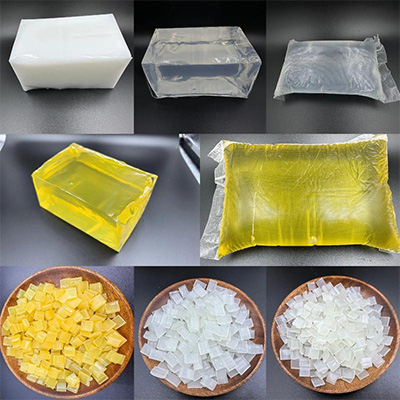Best Hot Melt Glue Production Line Equipment Manufacturer
Tel: +8618138373963 | jctmixing@outlook.com
 JCT
JCT  2025-10-14
2025-10-14
Bio-based hot melt glue is a thermoplastic adhesive that is melted by heating and then solidified to form a bond after cooling. Its core feature is that all or part of the raw materials are derived from renewable biomass resources such as plants (corn, sugarcane, cassava, soybeans, rosin, etc.), rather than traditional fossil fuels (petroleum).

Compared to traditional petroleum-based hot melt glue, bio-based hot melt glue offer the following significant advantages:
1. Environmental Protection and Sustainability
Reduced reliance on fossil resources: Uses renewable plant resources as raw materials.
Reduced carbon footprint: Plants absorb carbon dioxide through photosynthesis during their growth, contributing to carbon neutrality.
Compliance with global environmental regulations: Meets national policies requiring sustainable materials and reducing the use of plastics.
2. Excellent Performance
Many bio-based materials (such as polylactic acid (PLA)) inherently possess good hardness, strength, and transparency.
Bio-based polyesters (such as PHA) offer excellent flexibility and bonding properties.
3. Improved Safety
Bio-based hot melt glue typically contains no or reduced levels of harmful solvents and volatile organic compounds (VOCs), making it safer for production workers and users.

Bio-based hot melt glue is penetrating nearly all traditional hot melt glue applications:

Despite its promising prospects, the promotion of bio-based hot melt glue still faces several challenges:
Bio-based hot melt glue, driven by its green and sustainable properties, is rapidly evolving from an emerging alternative to a key component of the mainstream adhesives market. While currently facing cost and technical challenges, it possess significant long-term potential and is a key driver of the chemical industry's green transformation.
JCT professional provide hot melt glue production line turnkey project, including full set of equipment, formulas, installation and commissioning, and after-sale services, helping customers to start production in one-stop.
Feel free to contact us: +86-181 3837 3963 (Whatsapp, Wechat) or jctmixing@outlook.com.
